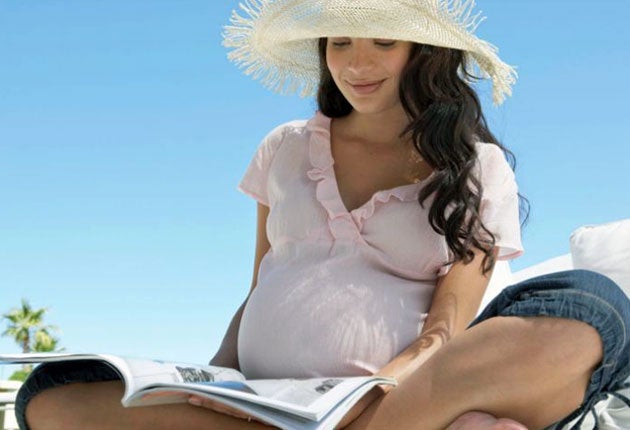Why the sun shines on summer babies
Ultraviolet rays make pregnant women have taller offspring with stronger bones

Your support helps us to tell the story
From reproductive rights to climate change to Big Tech, The Independent is on the ground when the story is developing. Whether it's investigating the financials of Elon Musk's pro-Trump PAC or producing our latest documentary, 'The A Word', which shines a light on the American women fighting for reproductive rights, we know how important it is to parse out the facts from the messaging.
At such a critical moment in US history, we need reporters on the ground. Your donation allows us to keep sending journalists to speak to both sides of the story.
The Independent is trusted by Americans across the entire political spectrum. And unlike many other quality news outlets, we choose not to lock Americans out of our reporting and analysis with paywalls. We believe quality journalism should be available to everyone, paid for by those who can afford it.
Your support makes all the difference.Women who are pregnant during the summer have taller, stronger-boned babies because they benefit from the sun's vitamin-boosting rays, a study suggested yesterday.
Children born in late summer or early autumn are about 5mm taller and have thicker bones than those born in winter or spring, an 18-year research project found.
Women lucky enough to be blooming in hotter months should get enough sun to boost their vitamin D levels just by walking around outside or even sunbathing. But those pregnant over winter should consider taking vitamin supplements, researchers at Bristol University recommended.
Anyone thinking of trying to short-cut the process by sitting on a sunbed in the final weeks of pregnancy would do themselves no good. Sunbeds emit mainly UVA light, whereas natural UVB rays from the sun trigger vitamin D production. Sunbed users also face well-publicised risks. Sally Watson, a spokeswoman for the study, said: "Perhaps people should not be quite so terrified of the sun. There has been a lot of panic about skin cancer but people do not need to panic about the odd few minutes of exposure. A little controlled English sun is better than none."
The Bristol team assessed the mothers of 7,000 children and calculated their likely exposure to sunshine during the last three months of pregnancy. At the age of 10, their offspring were measured and given X-ray scans to determine their bone density. Compared with the children born in winter months, those whose mothers had the highest sun exposure were, on average, 5mm taller and had 12.75 sq cm more bone area because their bones were thicker.
Taller people tend to have wider bones but these children had increased bone width "over and above" that accounted for by their extra height, the team discovered. This increase in bone mass could be attributed to higher vitamin D levels, proving that vitamin D is important for bone-building even in the womb, the researchers said.
Vitamin D, which works with calcium to build bones, is generated by sunlight on skin and for most people, this is their main source of the chemical. Vitamin D levels in the blood of 350 mothers in the 37th week of pregnancy were also measured, and were found to closely mirror their sun exposure levels.
One of the researchers, Professor Jon Tobias, said: "Wider bones are thought to be stronger and less prone to breaking as a result of osteoporosis in later life, so anything that affects early bone development is significant. Pregnant women might consider talking to their doctor about taking vitamin D supplements, particularly if their babies are due between November and May, when sunlight levels are low."
The findings are the latest to emerge from the Avon Longitudinal Study of Parents and Children, which enrolled 14,000 pregnant mothers between 1991 and 1992 and has since followed their children's development in minute detail. The study is funded by the Medical Research Council, the Wellcome Trust and Bristol University.
Vitamin D: The key to taller babies
Vitamin D is created by the action of sunlight on the skin and levels in all British residents are at their lowest at this time of year, in mid-winter. Short days and grey skies mean 60 per cent of the British population are deficient by the start of spring.
A 40-year review of research found that a daily dose could halve the risk of breast and colon cancer. It has also been shown to play a vital role in protecting against heart disease, cancer, diabetes and high blood pressure as well as being essential for bone health. Widespread deficiency in vitamin D among populations in the northern hemisphere suggests it may account for several thousand premature deaths from cancers alone. Twenty minutes in the sun, with the hands, arms and face exposed, is all that is needed to get an adequate dose, but it needs to be regularly topped up. In winter the only way of maintaining levels is by taking cod liver oil or supplements.
Jeremy Laurance
Join our commenting forum
Join thought-provoking conversations, follow other Independent readers and see their replies
Comments